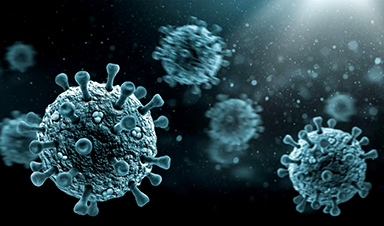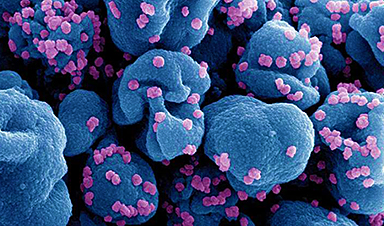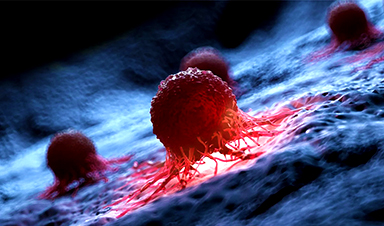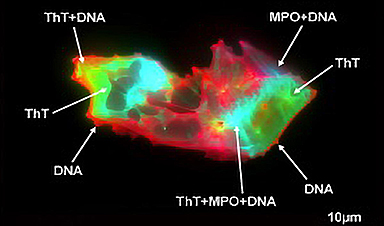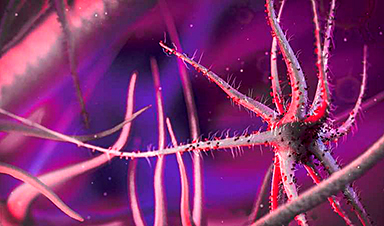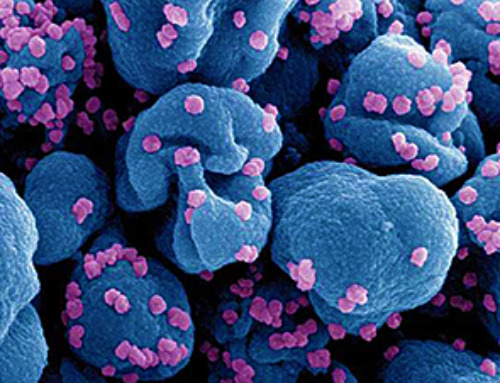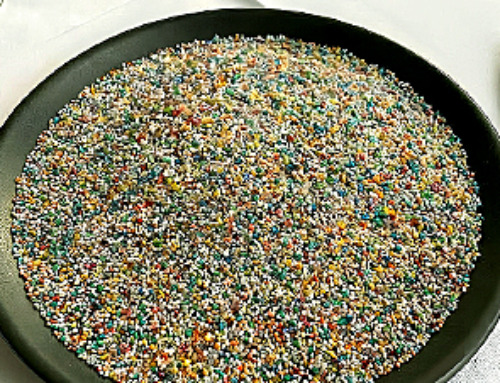Virginia Tech researchers discovered six new rodent carriers of hantavirus and identified U.S. hotspots, highlighting the virus's adaptability and the impact of climate and ecology on its spread.
Hantavirus recently drew public attention following reports that it was the cause of death for Betsy Arakawa, wife of actor Gene Hackman. Despite the headlines, the virus remains relatively unfamiliar to many, beyond its known association with rodents.
Researchers at Virginia Tech have deepened scientific understanding of this potentially deadly virus by studying its rodent hosts across North America. Using data from the National Science Foundation, the team identified three major hotspots of hantavirus activity in wildlife: Virginia, Colorado, and Texas. They also documented 15 rodent species carrying the virus, six of which had not previously been recognized as hosts.
The findings were published in the journal Ecosphere.
A Virus With Pandemic Potential
"This project is timely because hantavirus is considered an emerging disease of pandemic potential with symptoms that resemble severe COVID-19 infections," said Paanwaris Paansri, a Ph.D. student in the Department of Fish and Wildlife Conservation and co-author of the study.
Hantaviruses are a family of viruses that have been identified in regions all over the globe and can reach mortality rates similar to other diseases of high concern, such as nipah and Ebola. In Asia, hemorrhagic fever with renal syndrome is caused by the Hantaan virus, in Europe that syndrome is caused by the Dobrava-Belgrade virus, and in North and South America, hantavirus pulmonary syndrome is caused by Sin Nombre virus and Andes virus — all hantaviruses. Sin Nombre virus was first discovered in New Mexico in 1993.

Little is known about the ecology of hantaviruses in wildlife except that the pathogen is spread to humans by inhalation of aerosolized excreta, urine, or saliva from asymptomatic rodent hosts, and it can be fatal in humans.
The Virginia Tech team used data from the National Science Foundation's National Ecological Observatory Network program to gain a better understanding of hantavirus circulation in its sylvatic cycle — the pathogen's life cycle in wildlife — by examining the environmental influences and geographical distribution of the rodent hosts. The program collected and tested 14,004 blood samples from 49 species at 45 field sites across the United States from 2014-19.
New Hosts, New Insights
"In North America, Peromyscus maniculatus, the deer mouse, is the most common carrier but our study also revealed that other rodent species have a higher prevalence of hantavirus, which changes the current paradigm in hantavirus circulation in wildlife," said Paansri, whose mentor Associate Professor Luis E. Escobar, led the study and is an affiliate with the Fralin Life Sciences Institute. "This new information is expected to help us understand where and when hantavirus is most likely to occur, which is crucial for predicting outbreaks and informing public health officials."
The discovery of six new rodent species of hantavirus hosts is significant. Some of these newly discovered hosts inhabit regions where traditional hosts, such as the deer mouse or the white-footed mouse (Peromyscus leucopus), are absent, meaning they could be potential reservoirs of the virus in new or overlooked areas.
"This expands our understanding of the basic biology of the virus and shows that the virus is more adaptable than previously believed," Paansri said. "This has direct implications for surveillance strategies and risk assessments and can help explain some cases of hantavirus in humans where the main reservoir is absent or rare."
In addition to expanding the known host species, the researchers were able to gain a better understanding of seasonal trends and effects of seasonal weather shifts. For example, warmer winters and increased precipitation can increase rodent populations and drier conditions can facilitate the generation of contaminated dust containing particulates from rodent excrement and saliva, increasing the risk of transmission to humans.
The Role of Climate Change
"Climate change can cause population increases or distributional shifts of rodents, altering the epidemiology of hantavirus," Paansri said. "These fluctuations can lead to more frequent rodent-human interactions and increase the chance of spillover. We found some evidence that rodent demography and hantavirus prevalence can be predicted months in advance."
The actual number of human cases of hantavirus infections is largely unknown, according to Paansri, because many infections remain silent, meaning the infected individual may not develop any symptoms or the symptoms could mirror other diseases, such as the common cold or influenza.
The researchers plan to further explore the extent to which climatic variations influence hantavirus transmission in wildlife and in humans.
"We believe that many lessons learned from this study can be generalized to other wildlife diseases, considering that their distribution is global," Paansri said.
Reference: "Hantavirus in rodents in the United States: Temporal and spatial trends and report of new hosts" by Francisca Astorga, Abdelghafar Alkishe, Paanwaris Paansri, Gabriel Mantilla and Luis E. Escobar, 16 March 2025, Ecosphere.
DOI: 10.1002/ecs2.70209
News
Platelet-inspired nanoparticles could improve treatment of inflammatory diseases
Scientists have developed platelet-inspired nanoparticles that deliver anti-inflammatory drugs directly to brain-computer interface implants, doubling their effectiveness. Scientists have found a way to improve the performance of brain-computer interface (BCI) electrodes by delivering anti-inflammatory drugs directly [...]
After 150 years, a new chapter in cancer therapy is finally beginning
For decades, researchers have been looking for ways to destroy cancer cells in a targeted manner without further weakening the body. But for many patients whose immune system is severely impaired by chemotherapy or radiation, [...]
Older chemical libraries show promise for fighting resistant strains of COVID-19 virus
SARS‑CoV‑2, the virus that causes COVID-19, continues to mutate, with some newer strains becoming less responsive to current antiviral treatments like Paxlovid. Now, University of California San Diego scientists and an international team of [...]
Lower doses of immunotherapy for skin cancer give better results, study suggests
According to a new study, lower doses of approved immunotherapy for malignant melanoma can give better results against tumors, while reducing side effects. This is reported by researchers at Karolinska Institutet in the Journal of the National [...]
Researchers highlight five pathways through which microplastics can harm the brain
Microplastics could be fueling neurodegenerative diseases like Alzheimer's and Parkinson's, with a new study highlighting five ways microplastics can trigger inflammation and damage in the brain. More than 57 million people live with dementia, [...]
Tiny Metal Nanodots Obliterate Cancer Cells While Largely Sparing Healthy Tissue
Scientists have developed tiny metal-oxide particles that push cancer cells past their stress limits while sparing healthy tissue. An international team led by RMIT University has developed tiny particles called nanodots, crafted from a metallic compound, [...]
Gold Nanoclusters Could Supercharge Quantum Computers
Researchers found that gold “super atoms” can behave like the atoms in top-tier quantum systems—only far easier to scale. These tiny clusters can be customized at the molecular level, offering a powerful, tunable foundation [...]
A single shot of HPV vaccine may be enough to fight cervical cancer, study finds
WASHINGTON -- A single HPV vaccination appears just as effective as two doses at preventing the viral infection that causes cervical cancer, researchers reported Wednesday. HPV, or human papillomavirus, is very common and spread [...]
New technique overcomes technological barrier in 3D brain imaging
Scientists at the Swiss Light Source SLS have succeeded in mapping a piece of brain tissue in 3D at unprecedented resolution using X-rays, non-destructively. The breakthrough overcomes a long-standing technological barrier that had limited [...]
Scientists Uncover Hidden Blood Pattern in Long COVID
Researchers found persistent microclot and NET structures in Long COVID blood that may explain long-lasting symptoms. Researchers examining Long COVID have identified a structural connection between circulating microclots and neutrophil extracellular traps (NETs). The [...]
This Cellular Trick Helps Cancer Spread, but Could Also Stop It
Groups of normal cbiells can sense far into their surroundings, helping explain cancer cell migration. Understanding this ability could lead to new ways to limit tumor spread. The tale of the princess and the [...]
New mRNA therapy targets drug-resistant pneumonia
Bacteria that multiply on surfaces are a major headache in health care when they gain a foothold on, for example, implants or in catheters. Researchers at Chalmers University of Technology in Sweden have found [...]
Current Heart Health Guidelines Are Failing To Catch a Deadly Genetic Killer
New research reveals that standard screening misses most people with a common inherited cholesterol disorder. A Mayo Clinic study reports that current genetic screening guidelines overlook most people who have familial hypercholesterolemia, an inherited disorder that [...]
Scientists Identify the Evolutionary “Purpose” of Consciousness
Summary: Researchers at Ruhr University Bochum explore why consciousness evolved and why different species developed it in distinct ways. By comparing humans with birds, they show that complex awareness may arise through different neural architectures yet [...]
Novel mRNA therapy curbs antibiotic-resistant infections in preclinical lung models
Researchers at the Icahn School of Medicine at Mount Sinai and collaborators have reported early success with a novel mRNA-based therapy designed to combat antibiotic-resistant bacteria. The findings, published in Nature Biotechnology, show that in [...]
New skin-permeable polymer delivers insulin without needles
A breakthrough zwitterionic polymer slips through the skin’s toughest barriers, carrying insulin deep into tissue and normalizing blood sugar, offering patients a painless alternative to daily injections. A recent study published in the journal Nature examines [...]
